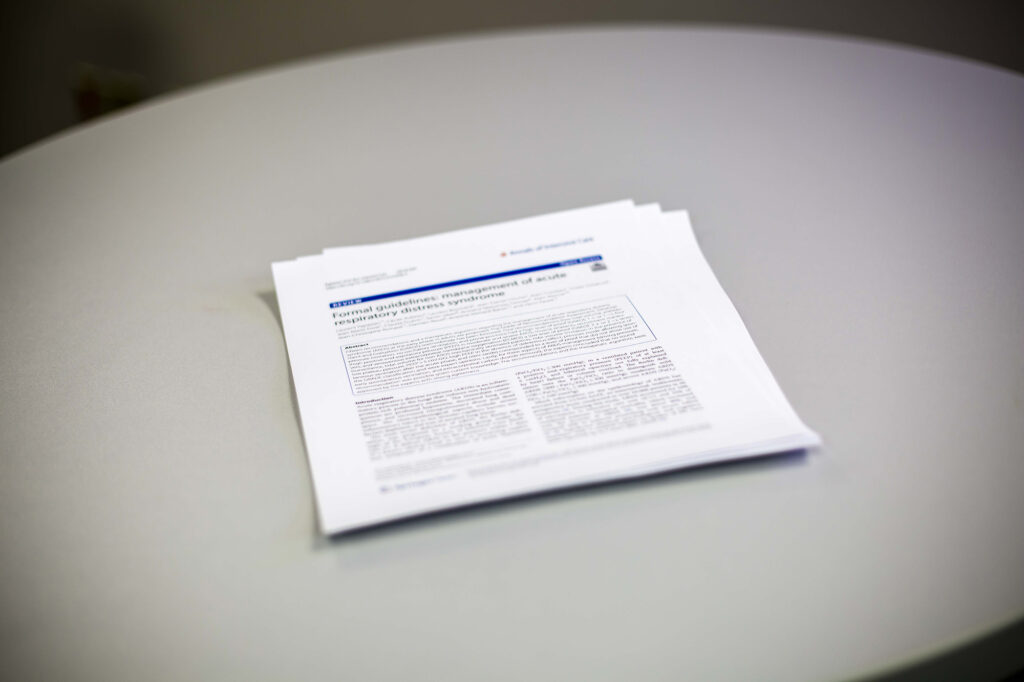
Prone Positioning Becomes an International
Standard of Care
After the 2013 landmark PROSEVA trial,1 multiple meta-analyses have published similar findings: Early prone positioning is a useful intervention to decrease mortality for patients with severe acute respiratory distress syndrome (ARDS)2,3,4. In addition, national and international guidelines for the treatment of ARDS have supported prone positioning as a standard of care for patients with a P/F <150, for a minimum of 12 hours per day.5,6,7 With the recent COVID-19 pandemic, many patients were found to have developed ARDS. Prone positioning also became an important intervention for these patients throughout the world.8,9
Prone positioning is an essential strategy for many different types of respiratory disorders. Placing patients manually in a prone position can put much stress on the intensive care unit staff, requiring training, multiple staff members, and continuous assessment of these critically ill patients. Automated prone therapy can provide much-needed support for hospital staff as well as allow staff to put more focus on assessment and monitoring of their patients.
The Pronova-O2 Automated Prone Therapy System provides a safe and efficient method for providing the prone position. Pronova-O2 is available for use nationwide. For additional information on automated prone positioning, please visit turnmedical.com or call 1-855-275-8876. Refer to Pronova-O2 Instructions for Use for full prescribing information including risks.
References
- Guérin C., Reignier J., Richard J.-C., et al. Prone Positioning in Severe Acute Respiratory Distress Syndrome. N Engl J Med 2013; 368:2159-2168
- Beitler, J. R., Shaefi, S., and Montesi, S. B., et al. Intensive Care Medicine online: January 17, 2014
- Henderson, W. R., Griesdale, D. E., Dominelli, Pl, & Ronco, J. J. (2014). Does prone positioning improve oxygenation and reduce mortality in patients with acute respiratory distress syndrome? Canadian Respiratory Journal, 21(4). 213-215, https://doi.org/10.155/2014/472136.
- Park, S. Y., Kim, H. J., Yoo, K. H., Park, Y. B., Kim, S. W., Lee, S. J., et al. The efficacy and safety of prone positioning in adult patients with acute respiratory distress syndrome: A meta‐analysis of randomized controlled trials. Journal of Thoracic Diseases 2015;7(3):356‐67. [DOI: 10.3978/j.issn.2072‐1439.2014.12.49; PUBMED: 25922713]
- Fan et al. (2017) An official American thoracic society/European society of intensive care medicine/Society of critical care medicine medical clinical practice guideline: Mechanical ventilation in adult patients with severe acute respiratory distress syndrome. American Journal of Respiratory and Critical Care Medicine, (195) 9, 1253-1263, https://www.ncbi.nlm.nih.gov/pubmed/28459336.
- Scholten et al (2017). Treatment of ARDS with prone positioning. CHEST, 151(1), 215-224, https://journal.chestnet.org/article/S0012-3692(16)52643-9/fulltext
- Bein, T., et.al. (2016). The standard of care for patients with ARDS: Ventilator settings and rescue therapies for refractory hypoxemia Intensive Care Medicine,42 (699-711), https://link.springer.com/article/10.1007%2Fs00134-016-4325-4.
- Davenport, L. (2020). Top 10 Must-Dos in ICU in COVID-19 include prone ventilation. https://www.medscape.com/viewarticle/927855
- Alhazzani, W., Møller, M. H., Arabi, Y. M., et al. Surviving Sepsis Campaign: Guidelines on the management of critically ill adults with Coronavirus Disease 2019 (COVID-19). Intensive Care Med (2020). https://doi.org/10.1007/s00134-020-06022-5






